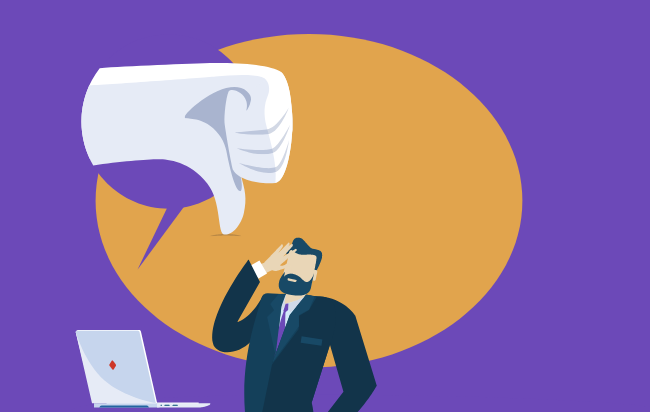
While the main focus of B2B Marketing activities is often automation and lead generation, social media is arguably one of the most influential platforms that a company has in order to reach its target audience. With more than 75% of B2B buyers using social media to make buying decisions, it is no wonder that social media popularity is growing. Using social media the right way is critical to using it at all, and finding the perfect mix of content and images is an art form unto itself.
There are a few traps that B2B marketers often fall into when it comes to social media that should be avoided at all costs. Let’s break them down:
It’s not just about you
A big mistake B2B marketers often make is heavily focusing on themselves and their products. It’s important to share content that drives audiences to your site, so you need to focus on them and their pain points, not about you and your solutions.
Focusing only on internal content creates a one-sided conversation and limits your opportunity to tag other people and accounts to increase your reach. This shows a lack of social listening and makes people feel less likely to engage.
You want people to know that you are listening, engaging, and on the pulse of the industry. Responding to posts and creating a conversation is a great way to let people know you are paying attention. This includes posts where your company is tagged, company posts, or just general industry posts that you can give your 2 cents to directly on the social platform.
Talking Too Much, or Not Enough
The best way to guarantee a loss of followers is to spam them with posts. There’s nothing that people hate more than to feel attacked by a brand. On the flip side, posting too infrequently causes you to become forgettable.
So what’s the “secret number” of posts you should be aiming for per week? There’s no one-size-fits-all answer. Spend time testing posts, topics, times, and frequencies to come up with the ideal mix for your industry and brand.
This is something that needs to be monitored continuously as you continue to grow. The landscape is always changing and the recipe needs to stay updated accordingly.
Incomplete Profiles (or Wait, who are you?)
One of my personal pet peeves for company profiles is when they are incomplete or inconsistent. What’s the point of putting in all the effort to social media, if there’s no way for your audience to learn more or contact you?
Social media today is not just a tool for your brand to reach a new audience, but also a channel for your audience to reach you. The more stumbling blocks you put in front of them, the more likely they are to leave your page and never return.
Make sure you have your website, company info, contact information and HAVE THE SAME PROFILE PICTURE ACROSS ALL PLATFORMS.
Not All Platforms Are Created Equal- Don’t Treat Them Like They Are
What works best on LinkedIn is not what works best on Twitter or Facebook, and that’s okay. The best way to see results for each platform is to set individual goals for each and build your content schedule around that. According to a CMI report, over 95% of B2B companies use LinkedIn as their primary social media platform- and they should. LinkedIn is a powerful tool geared towards professionals, and therefore the ideal place to start engaging with professionals in your audience.
Taking ads out of the equation (although if you want to learn more about LinkedIn ads check here) each platform has something to offer for a business looking to engage with B2B customers, and understanding each platform individually is important for posting the correct type of content.
A quick tip for each platform to keep in mind:
- Twitter- the average lifespan of a tweet is about 30 minutes. When preparing content for Twitter, don’t be afraid to schedule multiple times throughout the day as there’s a likelihood your previous tweet was missed.
- Facebook- Facebook isn’t the ideal platform for getting leads or targeting specific audiences, but it is important to keep it up to date as it is a great source for basic brand awareness.
- LinkedIn- While the platform is the most popular and generally the most professional, it's important to remember that social media is a social experience and therefore requires engagement outside of your page and content that isn’t too standard or boring. LinkedIn today is oversaturated with posts talking about the same things in the hopes or sounding “relevant”, and while sometimes it is important to be a part of a greater conversation, if you have nothing new to say sometimes it’s better not to say anything at all.
Conclusion- Planning, Planning, Planning
Using social media the right way can be impactful for your business in many ways if you put in the effort to do it right the first time. Before you can even start writing content, you need to remember to plan. Planning your social media strategy is a very important part of building a successful platform.While automation is a helpful tool for planning your social media, a mistake that is often made is the “set it and forget it” tactic. Before any piece of content goes out it should be checked for relevance- especially in the tech world, or else you can end up talking about something that is no longer relevant.
Posting the right type of content at the right time, making sure it is diverse, and different from other recent content is key to keeping your audience engaged and setting yourself as a thought leader in your industry.

by Leora Pudell on November 10, 2020
Leora is a digital marketing specialist at Penguin Strategies. She is passionate about digital marketing, marketing automation, and is always looking to learn new things in the field.





